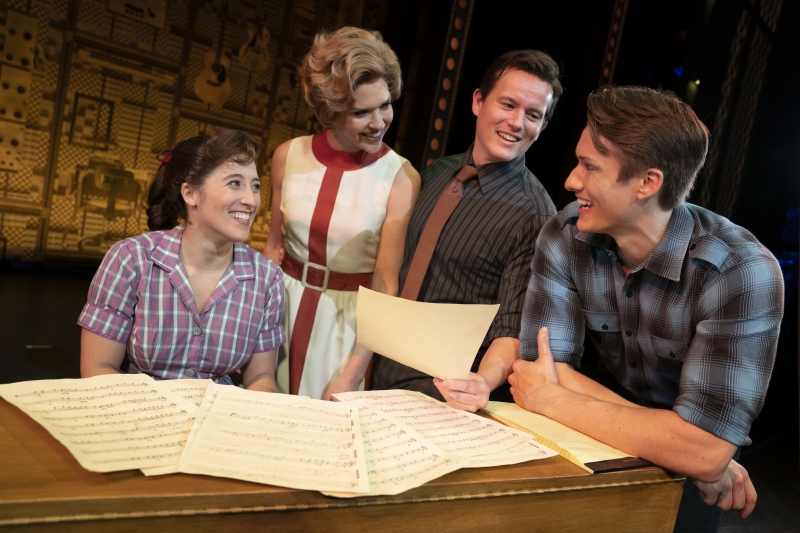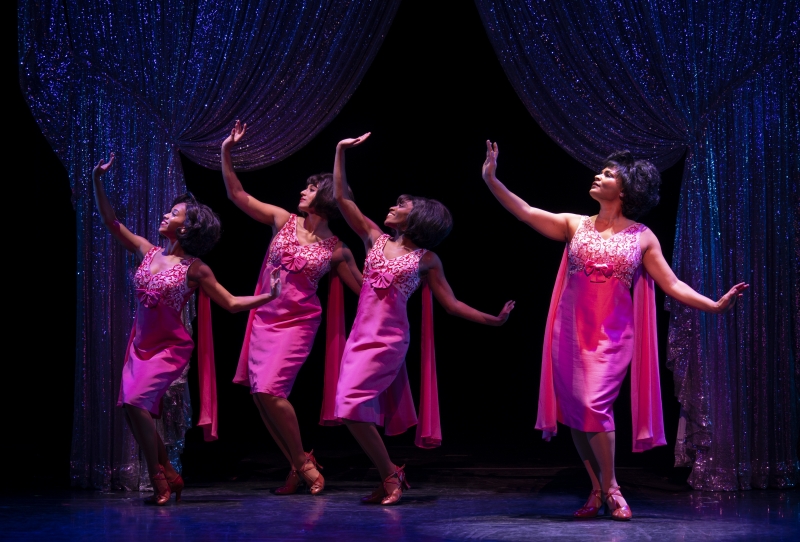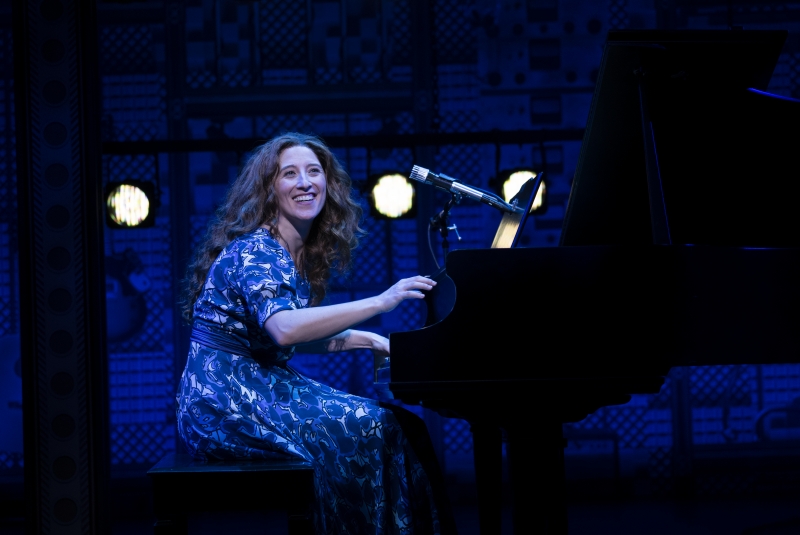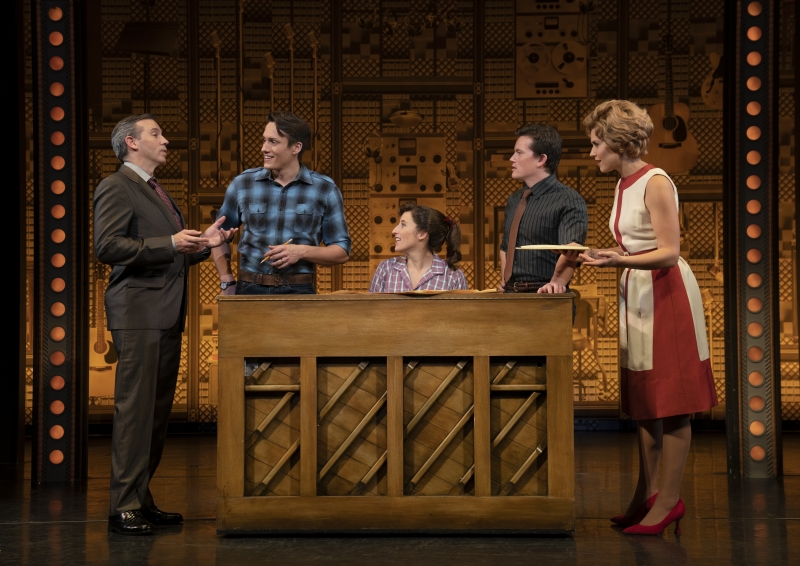Review: BEAUTIFUL - THE CAROLE KING MUSICAL at The Kennedy Center
The story of King's "soundtrack of a generation" deserves more depth
Before stepping foot into the theatre, you've already experienced the best aspect of Beautiful - The Carole King Musical - the extraordinary songs. The production, touring to the Kennedy Center through January 2, highlights the best of Carole King's hits and reminds us of the tremendous range of her talent.
Sadly, that narrative arc of Beautiful - The Carole King Musical is at such a frantic pace and is so light on details it takes a fascinating true story of grit, luck, and talent and renders it a flat, bland, homogenized variety-show telling of King's career.
Carole King's personal journey is a story of triumph, particularly for a woman (and parent of young children) during a time when women were encouraged to opt for the safety and security of hearth and home. Her groundbreaking story deserves greater depth than the brief cue-the-hit-song narrative of Beautiful - The Carole King Musical. Where the production succeeds is in sharing the talent and evolution of the artist who "wrote the soundtrack to a generation."
We track Carole King's rise to stardom from a 16-year-old darting into the city from her Brooklyn home to successfully pitch a song to Don Kirshner in the hive of the music business at 1650 Broadway. She soon meets her songwriting-and romantic-partner, Gerry Goffin. Their early hits together include "Take Good Care of My Baby," "Will You Love Me Tomorrow," "Up on the Roof," "The Locomotion," and "One Fine Day."

King and Goffin befriend another songwriting team in the famed musical incubator at 1650 Broadway, Cynthia Weil and Barry Mann (who penned "You've Lost That Lovin' Feeling," "Walking in the Rain," "On Broadway," and "We Gotta Get Out of This Place"). The collaborative duos are rivals, friends, sounding boards, and inspiration for each other. The Drifters, The Shirelles, Little Eva, and The Righteous Brothers brought their songs to fame.
Yet King's and Goffin's marriage can't withstand the artistic and family pressures. When the two split, King moves across the country. It's in California that King-a reluctant performer-realizes she is the best artist to record the songs she creates. She launches her solo career. We glimpse the creation of the Grammy Award-winning "Tapestry" album with "So Far Away," "You've Got a Friend," "(You Make Me Feel Like) A Natural Woman," and "It's Too Late."
Act II is much stronger than Act I because Carole King is finally telling her own story through her music. We contrast Goffin and King's "Pleasant Valley Sunday" with Mann and Weil's evolution to the edgier "We Gotta Get Out of This Place." It is clear to us that King must move on from the building on Broadway and simply churning out hits for others. As she finds her own voice and records her album, "It's Too Late" is a particularly cathartic moment in the production.
Sara Sheperd is a driven, committed, and earnest Carole King, salt of the earth, and eager to please. James D. Gish as Goffin pivots from cocky to competitive to confused as the lyricist strives to find personal and artistic fulfillment. Sara King is a confident Cynthia, an assured foil to the hypochondriac Barry Mann portrayed by Ryan Farnsworth. Yet these principals aren't given enough substance in Douglas McGrath's script to allow the actors to really dig in or to permit the audience to find connection.
Matt Loehr as Don Kirshner and Rachel Coloff as King's mother Genie Klein are cartoonish, delivering simple caricatures with broad Brooklyn accents.
Paul Scanlan as Nick, a guitarist who encourages King to come sing with the session musicians at a local bar, is an exception to the bland, two-dimensional characterizations. Scanlon makes Nick sweet, humble, human, and memorable.

The production elements were also underwhelming. In particular, Josh Prince's choreography fell far short of what is expected in a Broadway tour. The choreography of The Shirelles and The Drifters was interchangeable and repetitive. The lines were off, and the movement lacked the sharpness and verve the original groups brought to the stage. These numbers were a missed opportunity to add some pop, energy, and variety into the production. The choreography for "The Locomotion" was sloppy, and reminiscent of "The Mickey Mouse Club." Most of the action on stage was simply rolling the upright piano or other set pieces from stage left to stage right.

Alejo Vietti has fun with the costumes bringing us from 50s bobby socks through the mod 60s to the groovy 70s. Yet Vietti is careful to leave King, who professes to be a "regular person" and "nothing special," noticeably outside the fun, fashion swirl in plain sweaters and pants that would blend into the grocery store aisles or elementary school pick up.
Similarly, Charles G. LaPointe's wig and hair design is notable. His design helps move us through time and gives us clues to the personalities of key characters.
The production is serviceable; it's fine. You can bring the kids and grandparents for a nice holiday outing and everyone will be humming King's hits for several days after. There are times when audience members can't contain themselves and sing along because the songs are effervescent perfection and so well-known. It's a pleasant evening out to experience jukebox covers of the best of Carole King.
But it's not a show where you'll connect with the characters or uncover any great truths. You won't be stunned by great theatre magic or artistry. You won't leave the theatre changed - but you'll be humming some pretty great songs, have a bit more context about their formation, and have a deep appreciation for the artist who created them.
Running Time: 2:30 including one 15-minute intermission
BEAUTIFUL-THE Carole King MUSICAL is at the Kennedy Center's Eisenhower Theatre, 2700 F Street, NW, Washington, DC 20566. The production runs through January 2, 2022. For tickets, COVID-19 attendance policies, and further performance information visit the company's website.
BEAUTIFUL-THE Carole King MUSICAL features book by Douglas McGrath, direction by Marc Bruni, and choreography by Josh Prince. The creative team includes Derek McLane (Set Design), Alejo Vietti (Costume Design), Peter Kaczorowski (Lighting Design), Brian Ronan (Sound Design), Charles G. LaPointe (Wig and Hair Design), Steve Sidwell (Orchestrations and Music Arrangements), Jason Howland (Music Supervision) and John Miller (Music Coordination).
Photo Credits: Joan Marcus.
Reader Reviews
Videos



